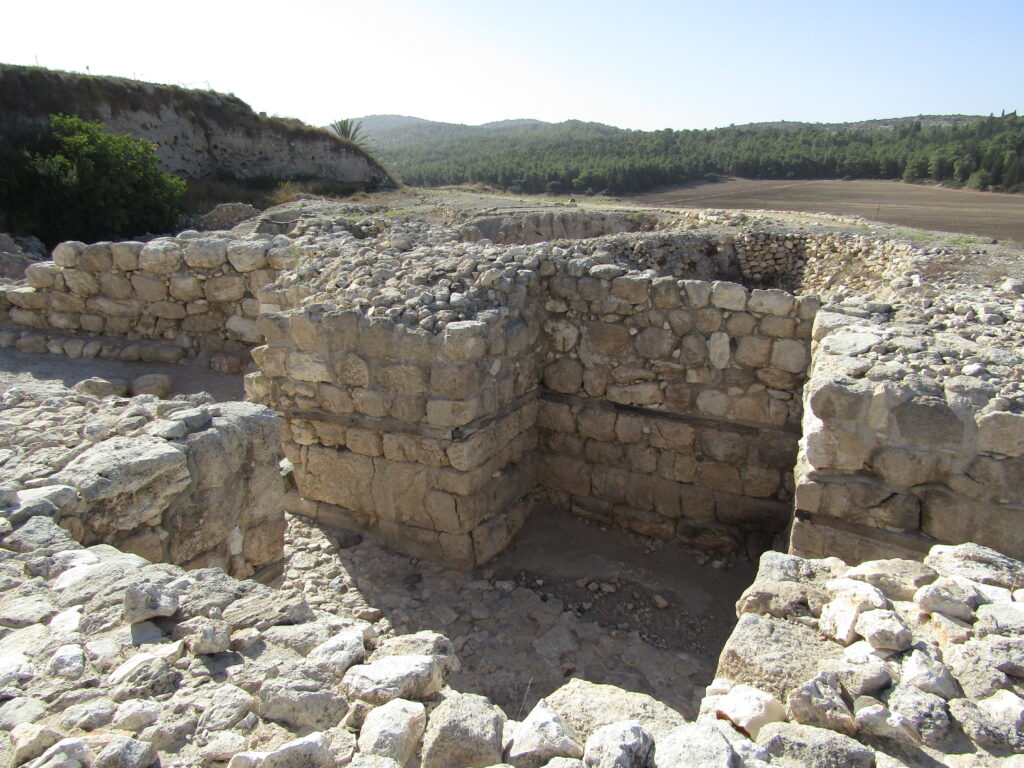Rising roughly 200 feet above the Jezreel Valley in northern Israel are the ruins of the ancient city of Megiddo. This huge mound covering 35 acres is actually a compressed stack of many different levels of human occupation and is the site of continued archaeological research.
There are many such mounds, or tells, throughout the Middle East which formed as cities were destroyed by war, earthquake or other causes and then rebuilt on top of the previously ruins. After the new cities took root and grew, they too would later be destroyed and rebuilt overtop of again
At least twenty different levels of occupation have been discovered at Megiddo dating back to perhaps 5000BC. The various layers of artifacts include a water tunnel built by King Ahab, a large oval Canaanite altar, an enormous grain silo and impressive city gates likely erected by King Solomon. Another structure attributed to Solomon is a large complex believed to be stables for his chariot horses.
The city had the benefits of existing near several international highways, having a good water supply, and being surrounded by rich agricultural lands. Such a setting attracted a lot of attention and the location was a strategic point for competing powers to control.
Over the millennia, Megiddo has been ruled by Canaanites, Egyptians, Assyrians, Persians, Babylonians, Greeks, Philistines, Romans, Ottomans, English, Israelites and others. Egyptian Pharaoh Thutmose III said that capturing Megiddo was equivalent to seizing 1000 towns.
Some historians say that Megiddo has witnessed more battles than any other place on earth. One of the earliest recorded occurred in 1457BC when Thutmose defeated the Canaanites to expand his kingdom. Other battles since include some documented in the Bible all the way up to WWI when General Allenby led the Allies to victory 105 years ago this month.
According to Jonathan Cahn, Megiddo literally means Place of Troops. Napoleon commented on how suitable the Jezreel Valley is for battle and General Allenby called it the most perfect battlefield on earth.
Revelation 16:16 indicates another battle will yet be fought near this ancient site and will be the scene of the final showdown between God and the armies of this world. The Greek word Armageddon means Mount of Megiddo.
Nancy and I were privileged to visit this ancient site when we were in Israel in 2018 and walked through the 3000 year old six-chambered city gates built by David’s son. We explored the water tunnel constructed by Jezebel’s husband and we looked out over the wide Jezreel plain below us.
It was a bit daunting to behold this valley that has witnessed the deaths of thousands of soldiers and that will yet claim more. It caused us to yearn for the Prince of Peace to establish His universal eternal peace.
Such tells also can illustrate each of our lives made up of various stages. As we pass through life, we live in different locations, work at different jobs, and befriend different people. It’s often helpful to take some time, like the archaeologists in Israel, to dig down through our past to remember where we’ve been.
As we do so, we can see God’s hand guiding, protecting and blessing us all along the way. Even when we weren’t aware of His presence, in retrospect we can see and recognize His activity in our lives and the various people He surrounded us with. Such discoveries should cause us to praise Him for His faithfulness even when we were yet unconcerned.
Nancy and I are planning to return to Megiddo in October of 2024 on another visit to the Holy Land and Petra. If you would like to join us for this faith-building pilgrimage, please contact me for details. Either way, God has many lessons to teach us from this and other historic locations if we take the opportunity to learn them.
Blessings, George
